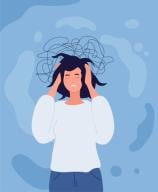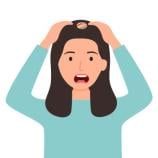Tackling Picking and Pulling from all Angles - the ComB Model for BFRBs
Tackling Picking and Pulling from all Angles - the ComB Model for BFRBs

What are BFRBs?
Body focused repetitive behaviors or BFRBs are more commonly called skin picking or hair pulling disorders. They involve “any repetitive self-grooming behavior that involves biting, pulling, picking, or scraping one’s own hair, skin, lips, cheeks, or nails that can lead to physical damage to the body and have been met with multiple attempts to stop or decrease the behavior.” (TLC foundation)
One treatment option that has promising data and research to support is the ComB model.
What is the ComB model?
The comprehensive behavioral treatment or the ComB model is a treatment protocol developed by (Mansueto 2019) that tackles the complexity of treating BFRBs. It begins with using a CBT assessment tool, a functional analysis. This looks at ways that internal and external environments are impacting the BFRB that the client wants to change. It is a way for the clinician to develop a very unique and specific treatment for the client. It’s a way to set up your environment so that you are more likely to manage the urge to pick or pull.
Let’s go through an example!
The SCAMP model is a framework that guides the clinician through different areas or domains to assess. Each domain tackles treatment from a variety of creative angles and leaves the client with a variety of skills and techniques for specific triggers.
Sensory - We all have a nervous system that has different needs. Using this domain, we look at particular sensory needs the client has and choose techniques based on that. For example: If a client’s nervous system is craving a smooth feeling, the clinician can provide examples of smooth items the client can use such as using a face mask or pimple patches that create a smoothness over a pimple or bump. Or using a worry stone or calm patch to touch.
Cognitive - There are specific cognitive belief systems and thoughts that frequently come up in therapy. The self-help book lists out some of them. This is a way to see how the client’s internal self-talk and thoughts can unknowingly increase picking/pulling or managing it. For example: “I’ll just pick/pull for a minute/just one” Rebuttal: How often do I stop after a minute or after just one? Answer: Never!. Using post-it notes in the bathroom with some of these rebuttals can be helpful.
Affective - Our moods and emotions impact how we view things and how we interact with them. This part of the model goes through emotion regulation skills. For example: If a client’s picking/pulling happens every time they get stressed, the clinician would provide stress relieving techniques and options for the client to do instead of picking/pulling.
Motor - Specific motions that a client does or a position they place their hand might trigger an urge to pick or pull. Thinking of things to make it less appealing or harder to pull/pick. For example: getting gel nails or a manicure can change the feeling of the client’s nails and they are less likely to get the same relief/feeling from picking and pulling.
Place - Specific places might trigger a client to pick or pull more, such as the bathroom or while driving. For example: dimming the lights in the bathroom so that you can’t see in the mirror as clearly/closely and less likely to get triggered by a hair or skin bump.
I would recommend the following if you are interested in receiving more training or resources. The TLC foundation BFRBs training program:
“Clinical Training Institute - TLC Foundation for Bfrbs.” Clinical Training Institute - TLC Foundation for BFRBs. Accessed 21 Aug. 2023.
Book: Mansueto, Charles S., et al. Overcoming Body-Focused Repetitive Behaviors: A Comprehensive Behavioral Treatment for Hair Pulling and Skin Picking. New Harbinger Publications, 2019.
This post is presented in collaboration with ADAA's OCD and Related Disorders SIG. Learn more about the SIG.
















